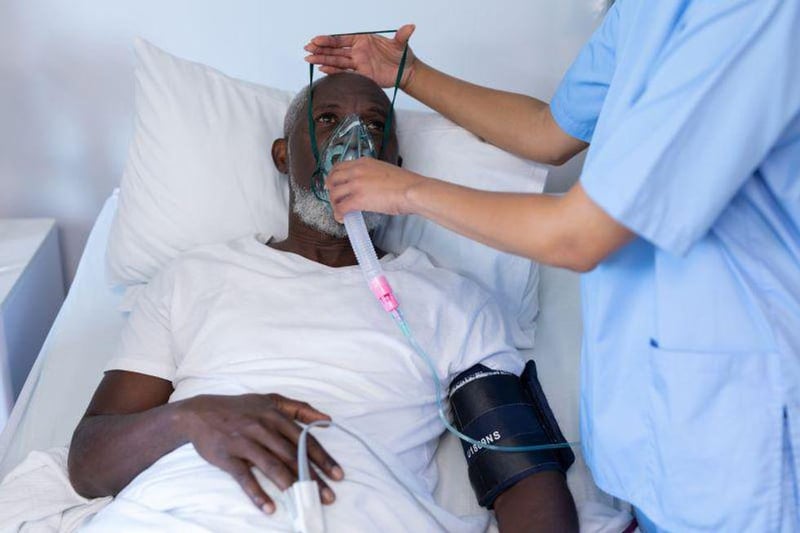Get Healthy!

- Amy Norton
- Posted October 16, 2023
Black Patients 42% More Likely to Die After High-Risk Surgery Than White Patients
High-risk surgeries are more deadly for Black and Hispanic Americans than for their white counterparts, new research reveals.
The study, of more than 1 million procedures performed in U.S. hospitals between 2000 and 2020, found that Black patients were 42% more likely than white patients to die within 30 days of surgery. That risk was 21% higher among Hispanic patients.
Had those disparities not existed, researchers estimated, over 12,000 lives could have been saved.
The fact that racial disparities exist in U.S. health care -- including post-surgery deaths -- is well known. Study after study has shown that minority patients, particularly Black Americans, fare worse in many areas of medical care.
"The first thing we have to do is not just 'get used to it,'" said lead researcher Dr. Christian Mpody, an assistant professor of anesthesiology and pediatrics at Nationwide Children's Hospital and Ohio State University.
He said one thing these latest findings do is illustrate the "gravity" of the issue -- in terms of the number of premature deaths that could have been prevented.
"We're not just talking about disparities. Behind this are real people, and real communities that are torn apart," said Mpody.
The study did find a positive trend: Over time, high-risk surgery became safer for everyone.
Between 2000 and 2020, death rates dipped for Black, Hispanic and white patients alike. The bad news, Mpody noted, was that the racial gap did not narrow.
"We have not addressed the inequity," he said.
Mpody presented the findings Sunday at the annual meeting of the American Society of Anesthesiologists (ASA), being held in San Diego. They were also published online in the Annals of Surgery.
For the study, Mpody's team analyzed records from a database that covers thousands of hospitals nationwide. They focused on adult patients younger than 65 who underwent over 1.5 million high-risk surgeries performed between 2000 and 2020. The surgeries included certain heart and vascular procedures, neurosurgeries, organ transplants and other complex operations.
Overall, the study found, Black and Hispanic patients were more likely to die within 30 days of surgery than white patients. That was with other factors taken into account, such as age, number of chronic health conditions and socioeconomics.
It all translated to roughly 12,700 more deaths among Black and Hispanic Americans, or about 600 a year.
The study cannot answer the question of why.
But, Mpody said, racial disparities in Americans' health care outcomes generally involve a complicated mix of factors. Some are related to the health care system, such as a lack of health insurance or lesser quality care.
But then there are the "social determinants" of health, Mpody said -- all the circumstances in people's lives and environment that take a toll on their health. If you are worried about paying the rent or have no reliable transportation, how do you afford medications or even make a doctor's appointment?
"Doctors think, 'I'll apply the same standard of care to everybody,' and that's equal care," Mpody said. "But that's not equity, because your patients are not all starting from the same place. We need to meet them where they are."
As a specific example, Mpody said that could mean health care providers asking patients if they have reliable transportation, and helping them with resources if they don't.
Dr. Tracey Straker is vice chair of the ASA's committee on professional diversity. She said the findings are unfortunately not surprising -- including the persistence of the racial gap during the 20-year period.
"Even though medical care has improved," Straker said, "the extrinsic factors -- the lack of health insurance, the social determinants -- haven't changed."
So the issue, she said, has to be tackled on multiple levels, in and out of health care. Within health care, Straker said, there is a need for more Black and Hispanic physicians: Research shows that patients are more likely to stick with their care plan when they "feel comfortable" with their provider.
It's also critical for patients to feel "empowered," both Mpody and Straker said.
"Engage with your doctor, ask questions, ask why they're doing things," Straker said. "So medical care is not something that's being done to you, it's being done with you."
More information
HealthDay has more on health care disparities.
SOURCES: Christian Mpody, MD, PhD, MPH, assistant professor, anesthesiology and pediatrics, Nationwide Children's Hospital, Ohio State University College of Medicine, Columbus; Tracey Straker, MD, MS, MPH, vice chair, committee on professional diversity, American Society of Anesthesiologists, Schaumburg, Ill., and professor, anesthesiology, Albert Einstein College of Medicine, Bronx, N.Y.; Oct. 15, 2023, presentation, American Society of Anesthesiologists annual meeting, San Diego; Annals of Surgery, Oct. 15, 2023




